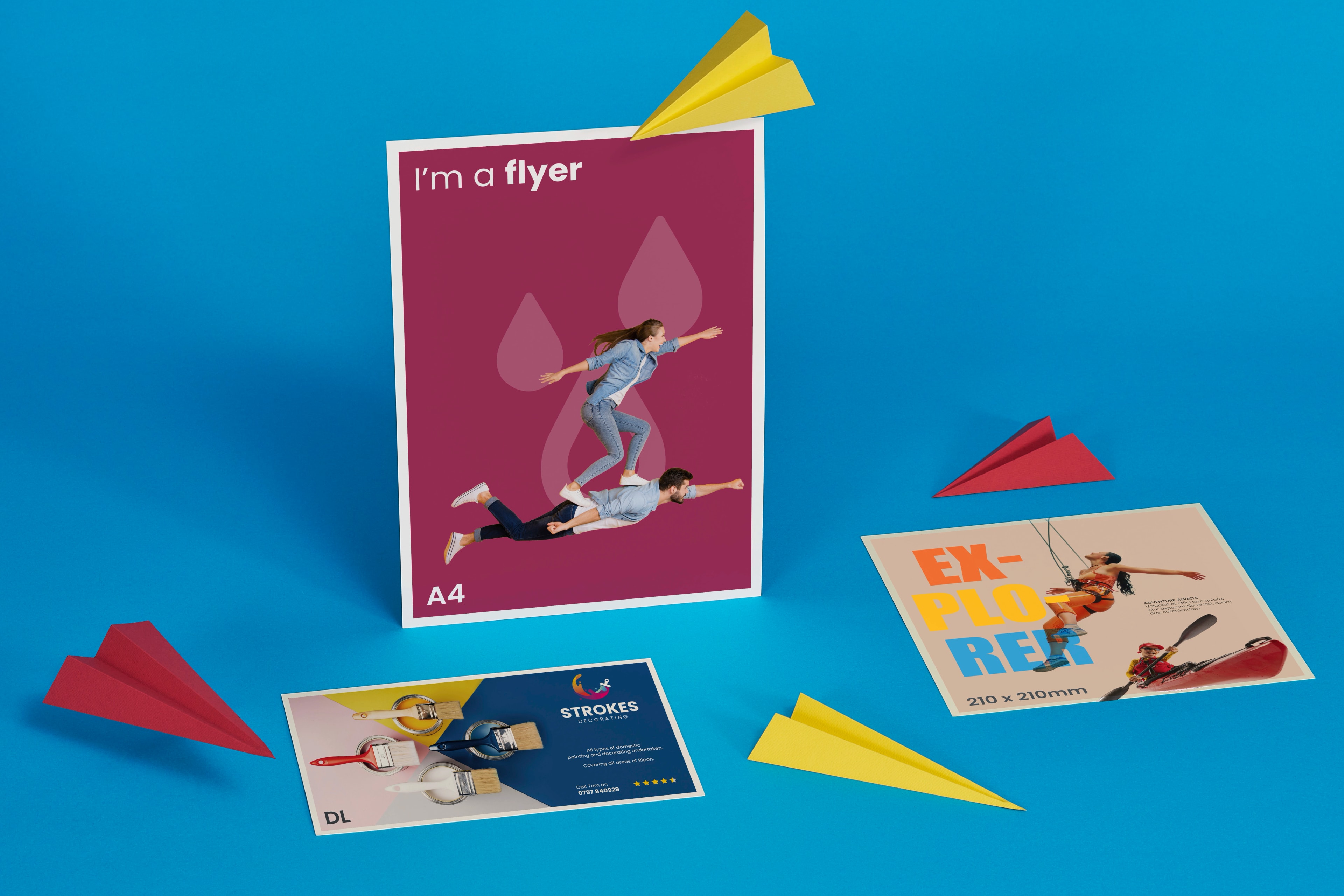
Synergising Online and Offline Marketing Activity
The purpose of marketing is to draw people to your business and encourage them to spend on a product or service. Some businesses benefit more from printed marketing such as flyers, booklets or brochures, and business cards, whilst others, particularly those with businesses that operate online only prefer to focus their energy on digital marketing. But whether you own an online handbag store or a pet grooming business, it is vital that your offline and online marketing activity works in harmony.
What is Marketing?
Simply put, marketing is the act of promoting the products or services you offer, with the view to increasing business revenue. You can do this the traditional way, through printed materials, or you can do this digitally.
What is Digital Marketing?
Digital marketing is anything you do online to push your brand and raise awareness of your business. The main digital marketing streams are:
- Your company’s website. The benefits of a website are that they give potential customers trust in your business – evidence suggests people are more likely to trust a business that has a website – and they are a space for you to really hype up your business and show all you have to offer
- Social media channels, the main being Facebook and Instagram where you can either promote your business: - organically - word of mouth, sharing your business page, launching competitions to increase ‘likes’ and reach; or
- through ‘paid social’ - paid advertising on social media channels whereby the platform targets your key demographic with ads on their feed
- Online stores such as Ebay, Etsy, and Amazon
- Email campaigns
- PPC marketing (pay per click – the ads you see at the top of your search engine results pages
- Affiliate marketing where you pay a commission to an external company (for example, Groupon) for traffic or sales generated from their website referrals.
What is Traditional Marketing?
Traditional marketing is also known as offline or printed marketing. It’s any marketing activity you undertake that doesn’t require a computer or smartphone to be seen and reach your target audience. This includes but is certainly not limited to:
- Printed materials such as leaflets, flyers, and brochures
- Street signage such as A-frames that sit outside your business premises and outdoor banners you can attach to gates or shop fronts
- Promotional gifts you can leave with your clients such as branded mugs and business mouse mats
What is Better, Online or Offline Marketing?
The simple answer is both. Both marketing streams will help drive your business and keep you at the forefront of customers’ minds. The trick is being with them at every stage of the buying journey. If they find you online and then visit your store, having customised packaging materials means your brand is going home with them. You can even pop into their bag a money-off voucher or a ‘thank you for shopping with us’ compliments slip to add a personal touch.
If their first encounter with your brand is by coming into store, make sure they can then find you online by passing them a business card with your website or social media details on it so they can follow you and even make a purchase from the comfort of their own home. If they do happen to look you up online, algorithms will see to it that they see you again, so it’s important to tell your customers if you have an online presence.
Traditional Marketing vs Digital Marketing
The argument for digital marketing vs traditional marketing is simple, both marketing streams offer huge benefits for a range of businesses. For example, homeware retailers can’t keep every product in their shop due to space restrictions. They will be housed elsewhere in a large warehouse, possibly abroad where storage costs are far cheaper.
So, what do they use to highlight their offerings? Printed brochures showcasing every colour, finish and size range available. What else do they use? A digital brochure on their website. Both marketing streams are highly beneficial for the seller as they can target not only people searching online but those who visit their showroom in person and want to see what else the company offers.
Or how about beauty salons? You go in for a treatment and leave with a flyer displaying their full range of services and the price of each. Then pop onto their social media page to see before and after pictures of the beauty treatments they can give you.
What is Offline to Online Marketing?
Offline to online marketing is anything you do to encourage customers you’ve met in person to visit you online too. This is particularly useful for online retailers or those who don’t have a physical brick-and-mortar store and do most of their dealings online.
For example, an Etsy jewellery seller is selling their products at an event. A customer makes a purchase and on the bag topper or jewellery card is the website or social media address. The customer then begins to follow that seller online and makes a purchase from their online store. They have then gone from being offline to an online customer.
Hacks to Perfecting Your Marketing Activity
Ensuring both your digital and traditional marketing channels work together to either increase footfall or website/social media visits is vital to your ongoing success. You can make your offline and online activity work in synergy by following these simple steps:
- Ensure your physical address (if you have one) is displayed on all online channels and vice versa – highlight your website or social media pages on your printed marketing as well as your physical address.
- Make sure your branding is the same across all marketing avenues, so people instantly recognise your business. Whether they are visiting you online after having visited your shop or looking for your store on the high street after having seen your website.
- Encourage people to review your business online. Four or five-star reviews on Facebook, Google My Business, or Trust Pilot are a great way to increase your customer base.
- Consider your customer base and target demographic. Older generations prefer to visit stores in person whereas younger people are more likely to find you online.
- Use branded packaging when shipping or posting the products you sell. They don’t just make your products look nice; they remind the customer where they bought them and make the unboxing experience that bit more special.
Whatever business you own, getting the synergy right between your online and offline marketing is key to success and business growth. Whether it’s printed materials that you have delivered through door drop marketing, or you get experts to help you capitalise on the opportunities an online presence affords you, we hope this guide has given you some insight to the importance of both online and offline marketing.
Posted on March 15, 2023 by WTTB
Related topics:


